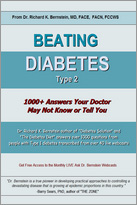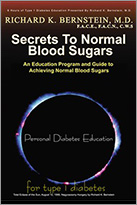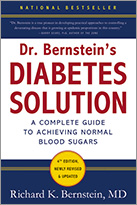by Richard K. Bernstein, M.D., F.A.C.E., F.A.C.N., C.W.S.
October 1999
Diabetes Interview
Question: For years, our doctors and diabetes educators have been telling us about what high BG readings will do, but little is said about low BG readings. What range of low BG values is dangerous and should be avoided over a long term? For example, if an individual consistently maintains a low BG range, say, between 60 and 90, will that low range produce any undesirable effects on vision, heart, circulation, kidney or liver function, etc.? Moreover, after a number of years, is it possible to withstand lower BG values without suffering an attack of hypoglycemia?
Answer: Each of my insulin-using patients is assigned a target blood sugar. For most, it is 90 mg/dl. Values below target are to be raised to target using glucose. For example, a 150-pound nonobese, nonpregnant, adult patient with a blood sugar of 86 mg/dl would chew one-half of a Dextrotab (.8 grams of carbohydrate). This would raise his or her blood sugar by 4 mg/dl.
There is no sense in deliberately maintaining blood sugars near 60 mg/dl. This is well into the hypoglycemic range and could result in the usual impairments of judgment, social behavior and coordination. Since there are many unpredictable variables (like estimating the carb content of meals) in the treatment of diabetes, small drops, from 60 to 35 or 20 mg/dl, are always possible, with potentially grave results.




